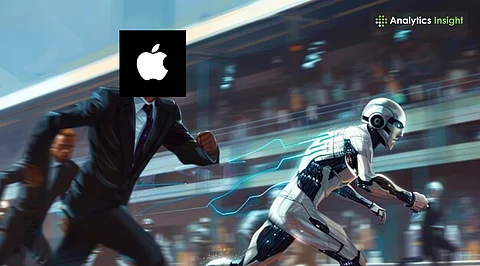

A silent shift is unfolding across the tech world in 2025. Apple, once known for leading the charge, is now falling behind in the AI race. Despite grand announcements, internal upgrades, and years of development, its in-house AI models have failed to match the strength of OpenAI’s breakthroughs. That gap is no longer subtle. It’s a spotlight on what’s gone wrong.
Apple promised an AI future with privacy, performance, and seamless integration. But the reality looks different. Siri remains underwhelming. Server models underperform. Many of the promised features have turned out to be vaporware or have been delayed indefinitely. What once felt like a controlled, user-first vision is now being seen as hesitation, while competitors sprint forward.
Apple’s 2025 AI updates, including the Apple On-Device and Apple Server models, failed to impress. According to Apple’s own benchmarks, human testers preferred the year-old GPT-4o from OpenAI and even Meta’s Llama 4 Scout for image tasks. The results show a clear gap, not just in one area, but across the board.
Where OpenAI has developed versatile, high-performing models capable of handling reasoning, creativity, and complex tasks, Apple’s models still focus on basic summarization, translation, and note organization. Apple’s models function more like tools than intelligent systems. They serve, but they don’t surprise.
The core problem is size, speed, and purpose. OpenAI scaled up fast—more parameters, better multimodal features, and constant updates. Apple, in contrast, remains committed to smaller models for local devices. While this supports privacy, it sacrifices power. On-device models struggle with advanced tasks. Server models, despite having a larger capacity, still trail their rivals in intelligence and general use.
Another major setback is training data. OpenAI and Google use vast, diverse datasets. Apple restricts its input to protect privacy and local relevance. That approach limits learning and weakens performance. In the AI era, limited data means limited intelligence.
Apple's challenges don’t stop at hardware or architecture. Talent is another sore point. Ruoming Pang, one of the company’s lead minds behind foundational models, left for Meta’s Superintelligence Lab. Reports confirm internal fragmentation, with Apple’s AI division lacking a strong, unified direction.
There comes a time when including larger incentives and greater freedom of innovation in the package attracts all the brightest minds. Since Apple is known to be secretive, it finds building large teams whose endeavor is open, cross-laboratory innovation, to be challenging. An absence of collaboration inhibits experimentation, and in the field of AI, experimentation is essential for evolution.
Also Read – Is it a Good Time to Buy or Sell Apple Stock Now?
The 2024 WWDC event set high expectations. Demos teased powerful AI features, including memory upgrades for Siri. However, many of those features never went live. Some demos weren’t even real-time software. The backlash was swift, and legal pressure followed. The contrast between the announcement and the delivery exposed Apple’s slow pace.
Unlike Google, Meta, or OpenAI, Apple never committed to AI as a platform. It saw it as a feature—an add-on, not a foundation. That hesitation shows. While others build ecosystems powered by AI, Apple’s models remain locked inside its own apps.
In 2025, the story shifted. Apple integrated OpenAI’s ChatGPT into Siri. It started exploring deals with Anthropic to access Claude. Reports suggest tests are ongoing using Apple’s private cloud infrastructure to host these third-party models. These partnerships signal a change in tone.
The decision to outsource parts of Siri to OpenAI and others highlights Apple’s internal struggles. Siri’s advanced chat responses no longer come from in-house models. They rely on the very rivals Apple once aimed to beat.
Apple’s strength has always been its tight ecosystem. But AI thrives on openness, scale, and shared progress. By keeping development closed, Apple has fallen behind. Its models lack general intelligence. They offer efficiency but not imagination.
Apple’s privacy-first stance, while admirable, has also become a bottleneck. Protecting data comes at the cost of learning from it. In today’s AI world, that trade-off grows harder to justify.
The future of AI is not just about smart assistants. It’s about intelligence as the new operating system. Apple must now choose between catching up fast or becoming a cautionary tale in the age of AI platforms.
Also Read – Zuckerberg Takes a U-Turn, Reverses Stance on Open Sourcing AI
Apple’s fall behind OpenAI, Google, and Meta in the AI race isn’t due to a lack of resources; it’s due to choices. Smaller models, limited data, fragmented leadership, and cautious strategies have slowed progress. While the company holds strong values around privacy and design, it now risks falling behind in a world that is moving forward quickly.
Siri’s future may depend on third-party intelligence. And Apple’s iconic independence now bends toward external help. If intelligence becomes the next OS, Apple needs bold moves, not quiet upgrades. The AI race doesn’t wait!
